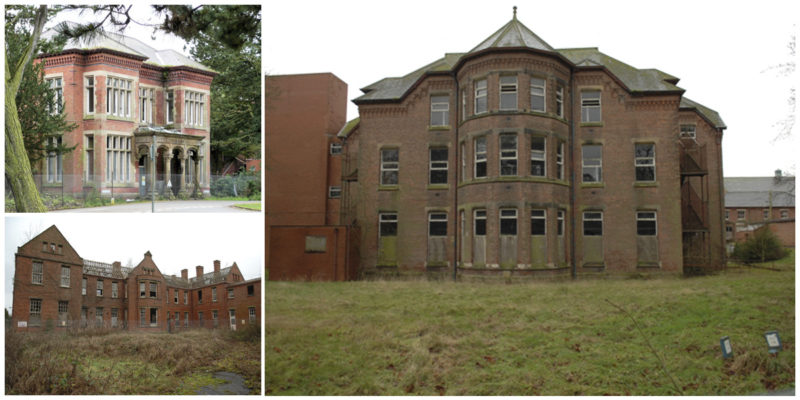Whittingham Hospital opened in 1873 under its original name of the Fourth Lancashire County Asylum in the small town of Whittingham, in Lancashire, England. It went on to become the largest mental hospital in Britain and is best known for the production of the first EEG machine, which was made from leftover war materials.
The hospital was built because the city was in great need of an additional asylum. The hospital was like a little city housing its own farms, church, telephone exchange, gas works, railway, ballroom, orchestra, and butchers. It was designed by the asylum architect Henry Littler and the red bricks from which it was constructed were made from clay that was found on the site.
Before it officially opened, the hospital already had 115 patients who were very helpful during the building. The first large complex, which would later be known as St Luke’s Division, was completed in 1875. It had an Anglican church, reception hall, a farm, a Catholic church and space for 1100 inmates.

The St. John Division was built to the north of the site in 1878 with room for 700 patients and a Post Office. It took water supplies from Beacon Fell and 90,000 gallons were free for the hospital to use daily. In 1884 a sanatorium known as Fryars’ Villa was established for patients who had infectious diseases. Almost ten years later, in 1894, electric lamps were installed.

Construction was completed in 1900 of a second annexe, Cameron House, and the West Annex (later called St. Margarets Division) opened in 1912. The new West Annex was used during World War I to treat military war casualties, four of whom were laid to rest in the hospital cemetery and are now under the care of the War Graves Commission.

By 1939, the hospital became the largest mental hospital in Britain with 3533 patients and a staff of 548 people. During World War II the West Annexe was again used by the military. The mental patients were transferred to other hospitals in Lancashire until the building was returned to civilian use in 1946. After the war, the hospital was renamed Whittingham Hospital and it became part of the National Health Service.
Inovative staff Dr C. S. Parker and Mr. Charles Breakall created a pioneering early EEG machine from War Surplus material which they bought for two punds and ten shillings. Their invention was featured in The Lancet. They conducted many experiments in the newly emerging field on Whittingham patients.

The hospital started to lose its reputation in 1967 with allegations of abuse and neglect. The Student Nurses’ Association called a meeting with the senior nursing tutor, and on 18 July they submitted a list of complaints about the ill-treatment of patients and the cruelty of the staff. Despite an attempted cover up by the Head Male Nurse, an inquiry was launched the following year to investigate. Accusations included that patients had been locked outside, not fed well, and even dragged by their hair by some nurses. There were also reports that patients were beaten, and closed in a storeroom. In 1975, a documentary was made about the hospital for Granada Television.

New movements in psychiatric treatment throughout the 1970s and 80s changed the need for an institution only for mental patients, and many wings were opened as general hospital wards. The hospital closed in 1995 and the site where it stands is known as “Guild Park”.

The St. John’s and St Margaret’s division have been demolished and the remaining buildings of the complex were left derelict. A Guild Lodge was opened in 1999 at the edge of the park providing health care for mental patients and there are plans to built some 650 new homes on the site. Some of the old hospital buildings will be converted into apartments.
